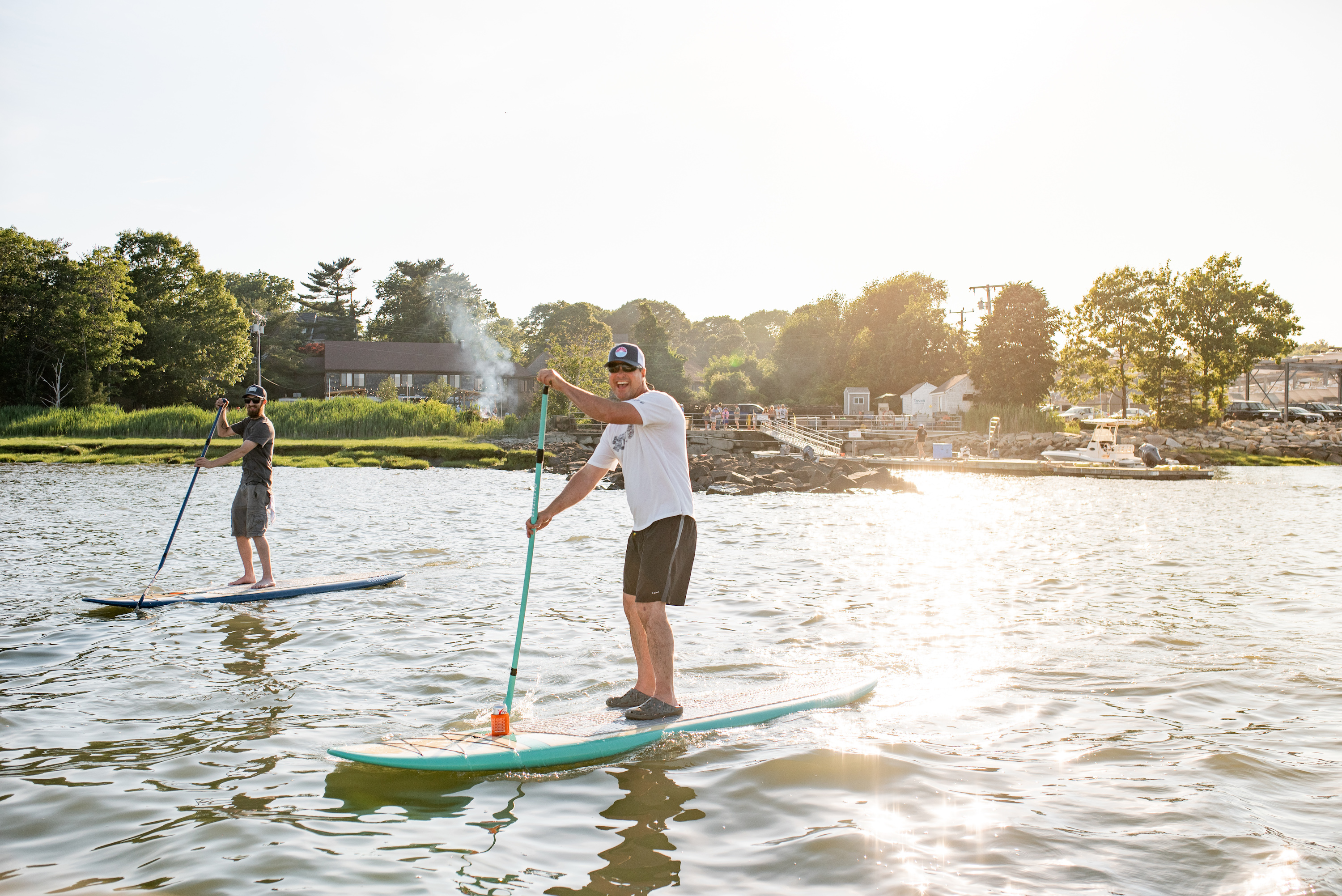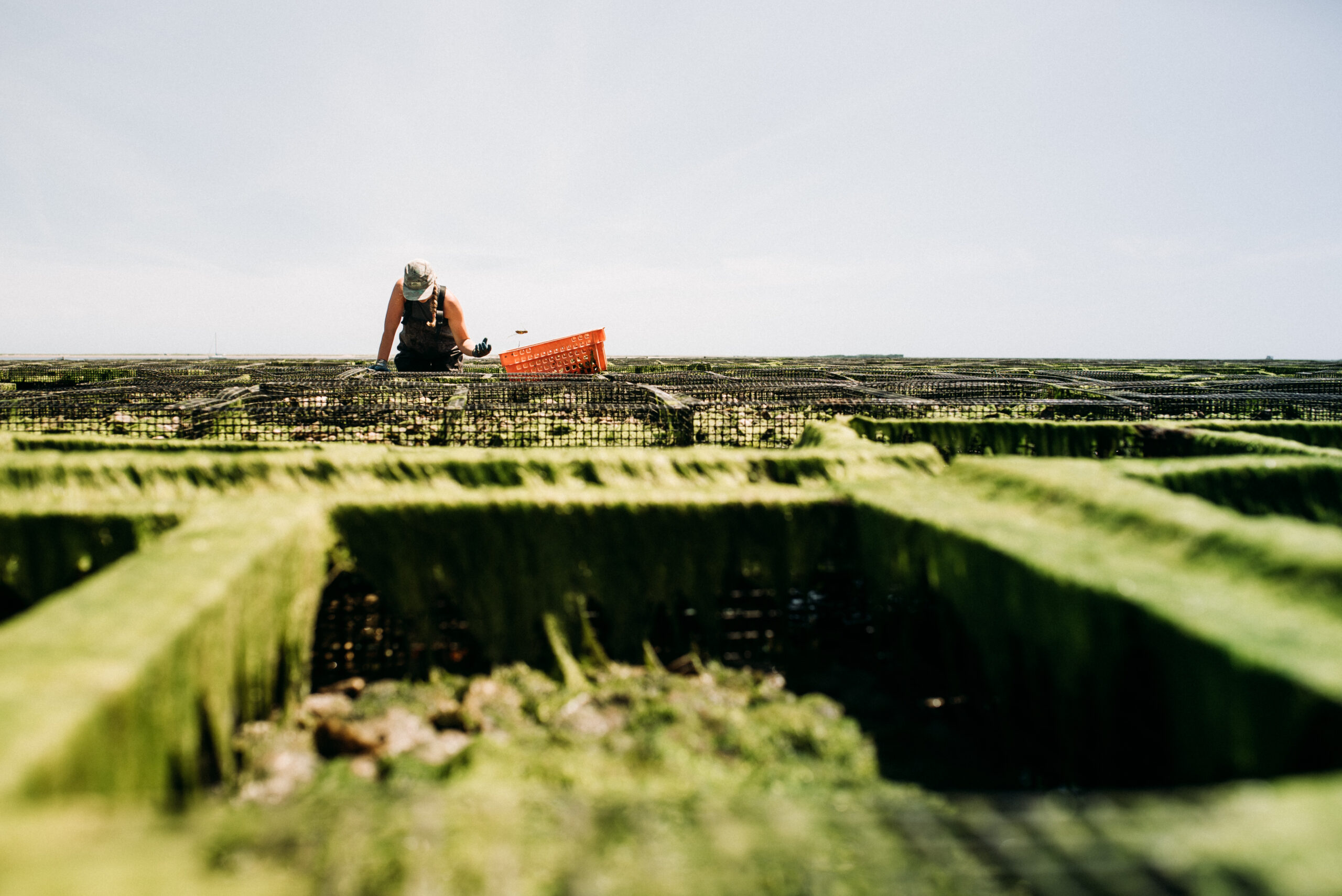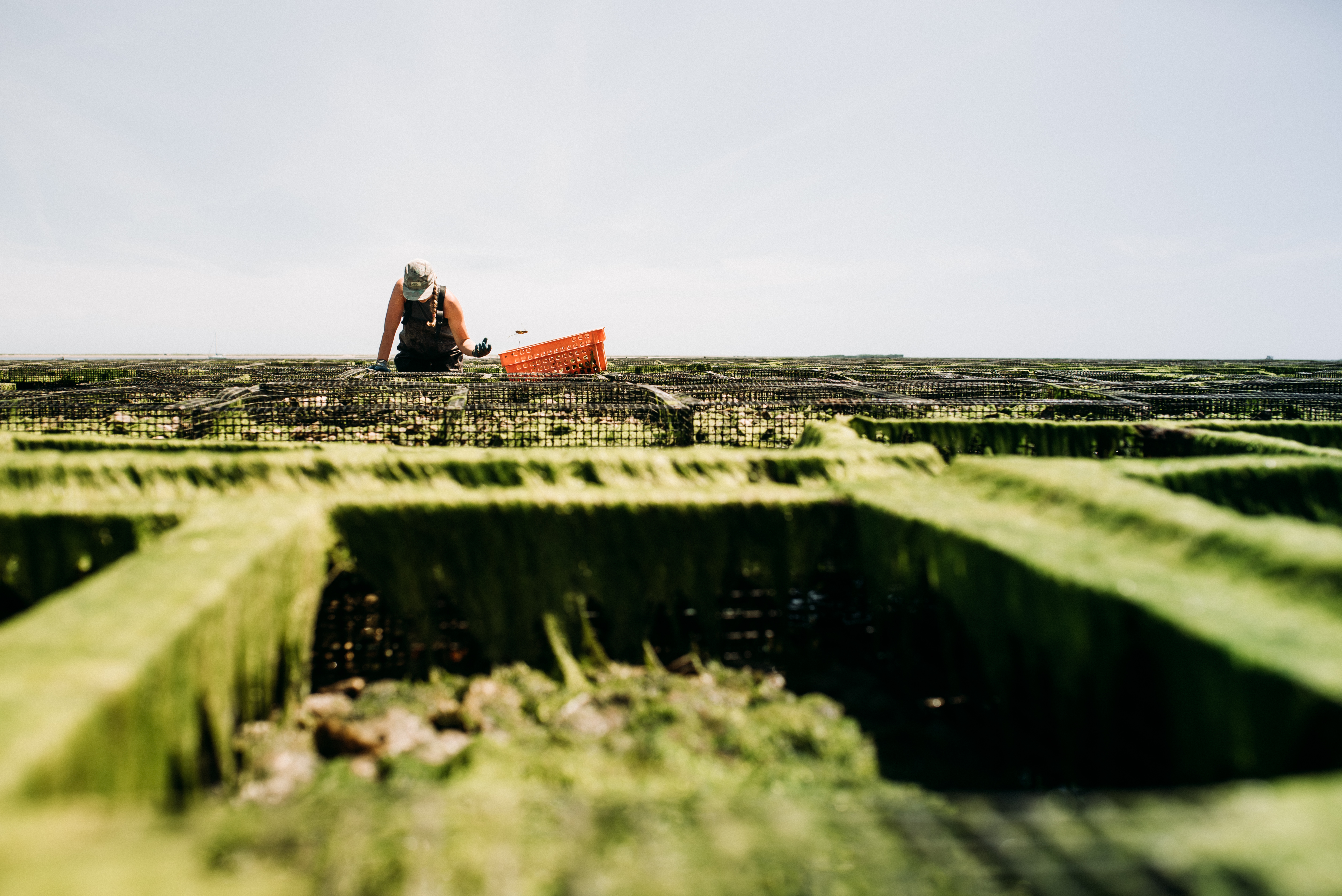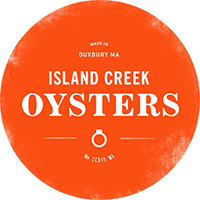What does ‘peak summer’ mean to you?
Is it hazy afternoons licking melted ice cream off your hands or waiting in line for the perfect lobster roll?
For oyster farmers, peak summer is marked by 12 hour days on the water and shuttling gear from one corner of the bay to the other. It’s sunburnt necks and backs-of-knees (yes, those too can burn), shucking oysters until their palms bleed and kicking off sweaty Xtratuf boots before crawling into bed by 9pm. Summer is the short window of possibility that New Englanders take advantage of best; it’s the few precious weeks in which our farmers must get everything done before the season grows cold again.
The Oysters:
Peak summer sun sows the bay with algae, serving up a feast for our hungry crop. Oysters grow faster in the warmer water, visibly changing when spring turns to summer. The oysters taste bright and vegetal, their meat begins to fill out and their shells are stronger and heavier than the months prior (yay for easy shucking!).
In the wild, summertime is when the magic happens. Oysters reproduce in water temps of 75º-80º, so regions that hit this temperature range will be teeming with wild oyster larvae. Duxbury Bay has historically been too cold for a wild population of oysters, so we don’t have to deal with the physiologic changes that result from spawning, which is why we rely so heavily on the epic scientific playground that is our hatchery for a sustainable source of seed.

The Hatchery:
We’ve talked a lot about the goings-on in our hatchery – a laboratory ran unintentionally but exclusively by fabulous women – where we spawn our year’s supply of oysters. By July, the hatchery team has spawned tens of millions of oyster babies and handed them off to the farm crew to care for. With their largest task behind them, the team can spend the rest of the summer experimenting with different algae strains and new species (hello, quahogs!). Skip pioneered oyster farming in Duxbury Bay and this spirit of curiosity continues to inspire new breakthroughs in commercial aquaculture.

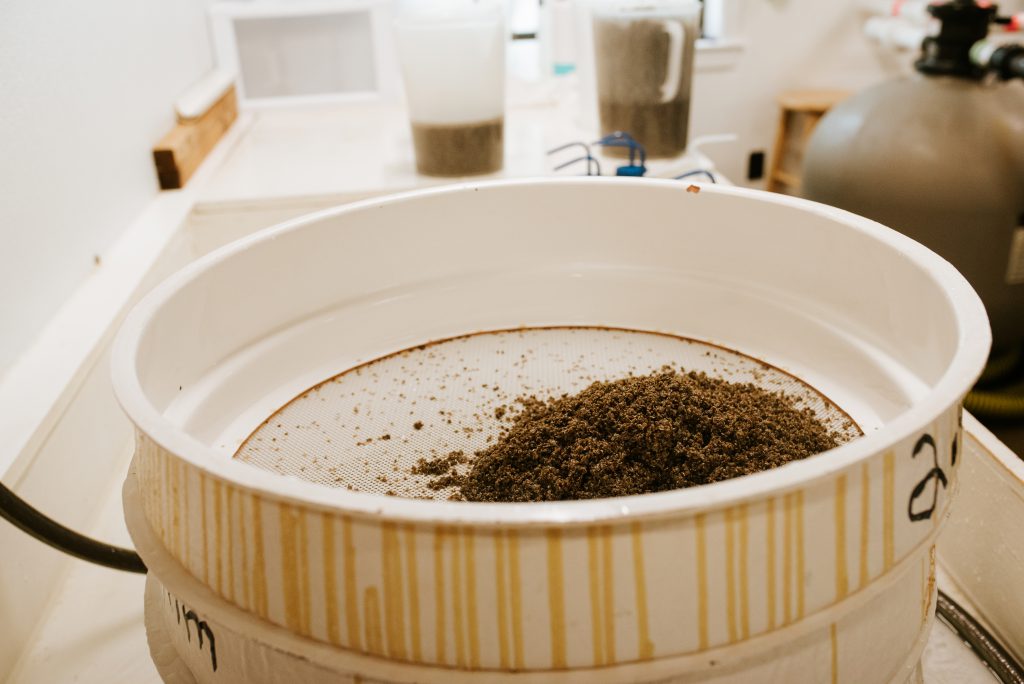
The Farm:
Harvest, cull, count, wash, bag. Repeat.
The farm crew is a machine that never stops churning. Aside from incessant harvesting, the crew must also take care of juvenile oysters. Seed from the hatchery is now big enough to move from upwellers on the shoreline into floating bags and trays which get dispersed around the bay. This is a crucial time in a young oyster’s life – how thoughtfully cared for they are will affect how they form, shuck, and look in 1-2 years time. The crew is busy dragging the bottom of the bay for Island Creeks, and culling the oysters ready for harvest. When they aren’t culling Island Creeks, they are massaging the Row 34 and Aunt Dottys to help encourage deep cupped, beautiful oysters.
Harvest, cull, count, wash, bag. Repeat.
Ursula, Island Creek’s Farm Manager, coaxes perfection out of every oyster.
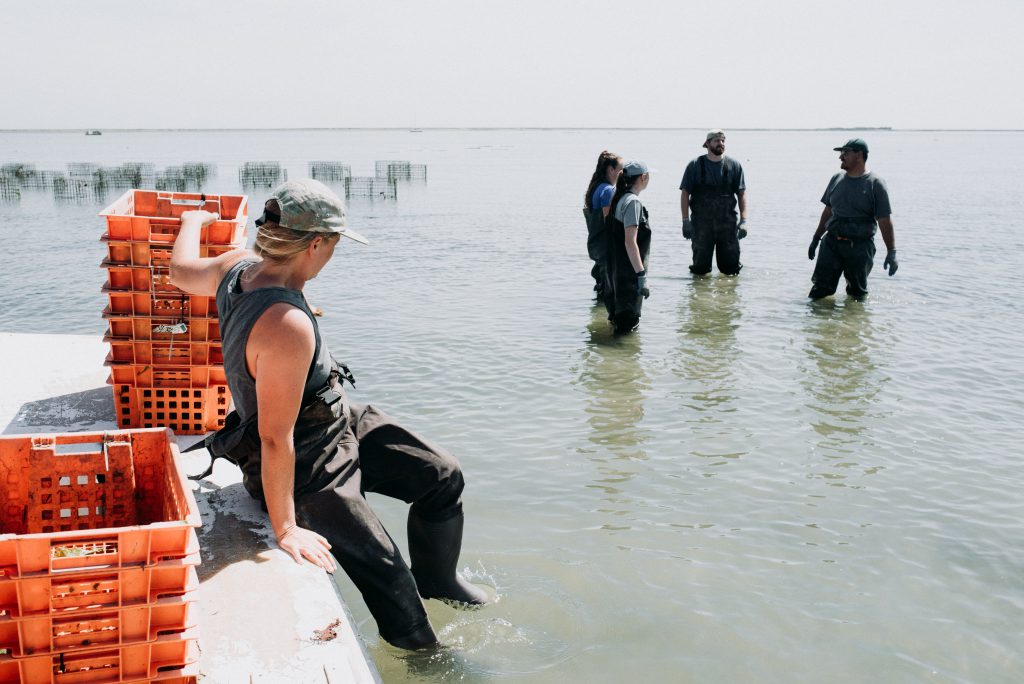
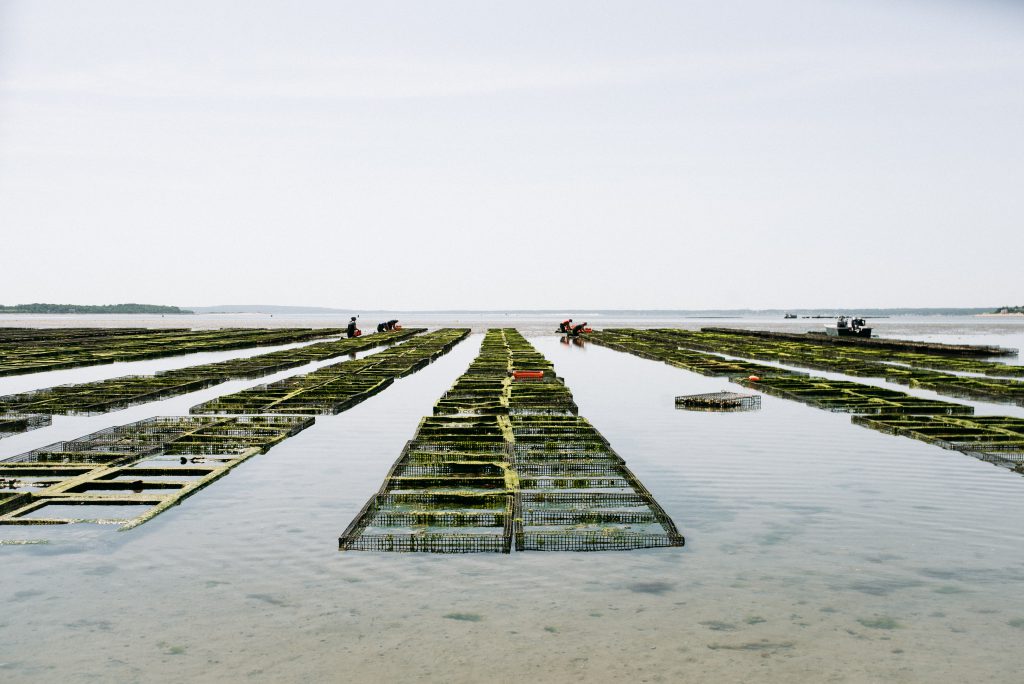
The Fun:
What makes it all worth it at the end of the day?
Creating space on our farm for people to enjoy and experience Island Creek at its finest. Saddling up to the raw bar after a long day of harvesting. Opening up the Caretaker’s Cottage to new friends.
You want peak summer? Come see for yourself.
